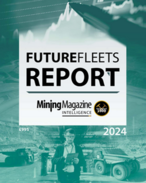Speaking at Paydirt’s Latin America conference last month, McDonald said most miners had left the workforce out of their strategic plans before the boom and it had cost the industry dearly.
He said companies would have to plan how they were going to secure workers for their future operations.
“We had one of the worst declines in productivity in the mining industry over the period during which our growth was on its upward curve. They passed each other because there was insufficient preparation,” he said.
Despite the current downturn making it easier to find workers, McDonald said the industry was still in decent shape and the softer conditions should not lull miners into a false sense of security.
“We keep hearing the language of the boom and the bust,” he said.
“It’s a cyclical business, that’s the nature of it.
“In Australia we’re moving from an investment dominated market to a production dominated market, it’s not a bust.
“In the transition from investment to production, we’re going to see a rise in demand for the operational occupations and skills. But we’re also going to have to look at greater levels of productivity.”
While investment might be on the decline, McDonald said there was still demand for key roles and miners needed to make sure they had the rights plans in place.
He said some major mining and infrastructure projects were still having trouble finding skilled workers and, combined with the cost and productivity issues facing the sector, labour problems represented some of the biggest roadblocks to attracting new investment.
“Skills shortages have been in the top five risks for the resource industry, both domestically and internationally, for a number of years now,” he said.
“The fact that it stays in the top five is a concern and it’s as much a concern about planning as it is actuality.
“The forecasts that we’ve been working with suggest that in the decade up to 2023 there’s going to be increasing demand for drillers, miners, shot firers, metal fitters, machinists, production managers and electricians.
“We should not be planning for the next bust.”
McDonald said the passing of reconciliation week recently was an opportunity to acknowledge the significant untapped labour resource that indigenous communities provided and engaging new demographics was part of working with local communities.
Beyond filling vacancies, he said workforce planning was vital to establishing a community presence and ensuring employees were productive and safe.
“In developing human capital we are developing communities,” he said.
“Mines operate in a community. You can’t pick one up and go build it somewhere else. It’s not the manufacturing industry.”
In developing this partnership, McDonald said companies should look at using a local workforce as much as possible.
“The community should be where the legacy and the immediate need for skilling comes,” he said.
“How you start that will depend on what the skills base is to begin with.
“If the base you’re coming off is a well-educated and well-nourished workforce, you’ve got different pressure points and different ways of defining the competencies that will be used to skill people and occupy jobs.
“If you need to bring skilled labour in, bring them in on the basis that you’re going to grow a locally skilled workforce off the base of that initiative.”
On the safety side, McDonald said the introduction of units of competency in training packages had led to significant improvements in industry safety.
“People have to work and they have to do it in a productive and safe environment,” he said.
“Skilling those people is the only way you can guarantee that’s going to happen.”
At the end of the day it means people are the key to a company’s success and the importance of finding and developing the right skills can’t be underestimated.
With recent studies still showing Australian firms continue to be plagued by skills shortages, a strategic plan for future workforces should be high on the agenda for all mining companies.
























